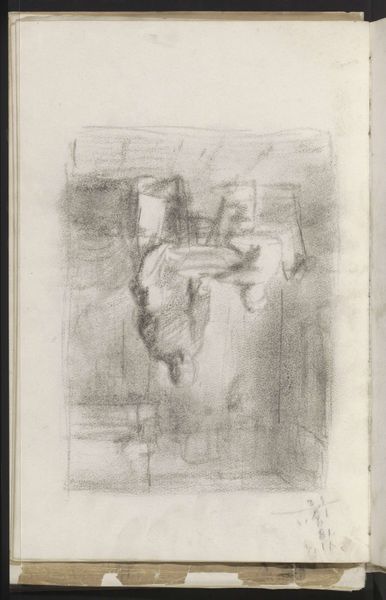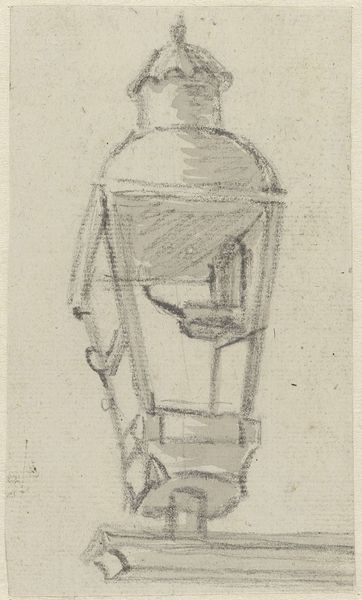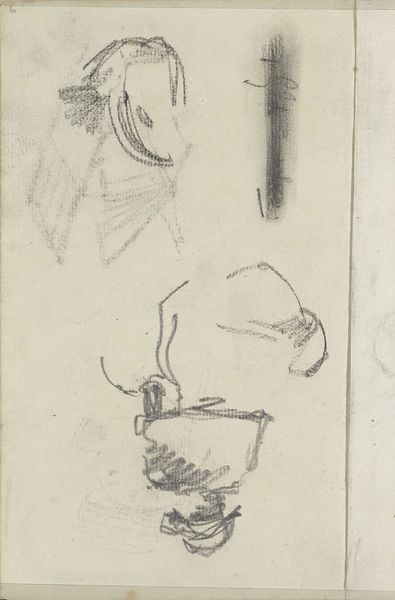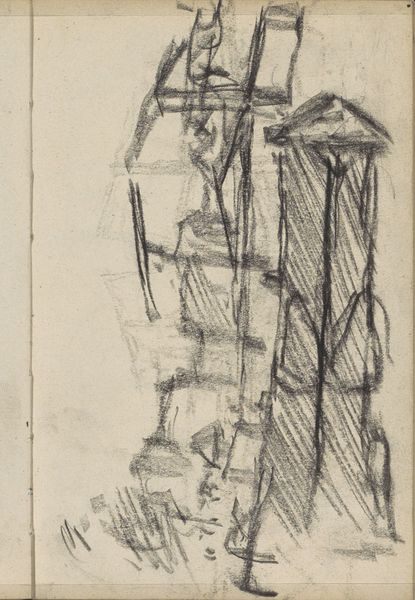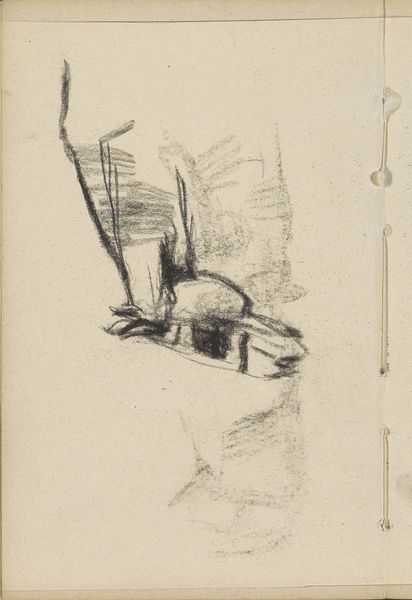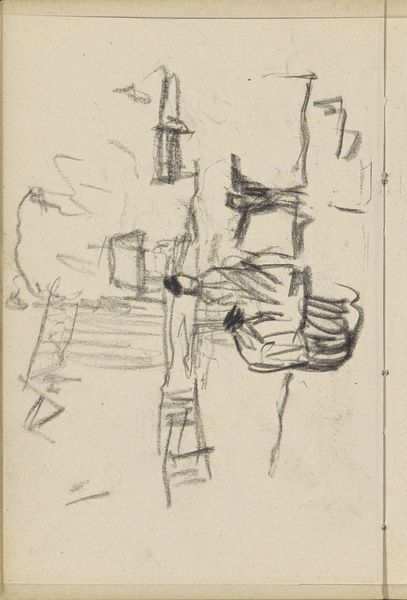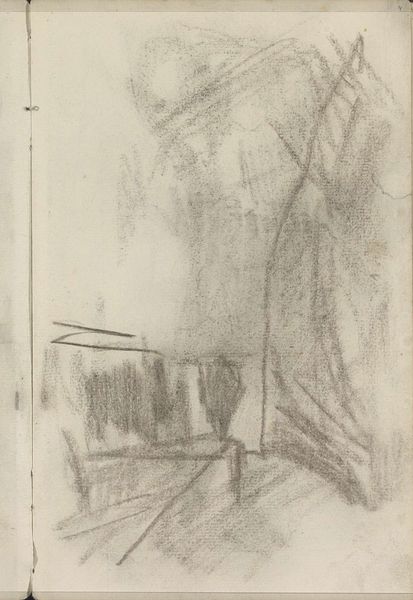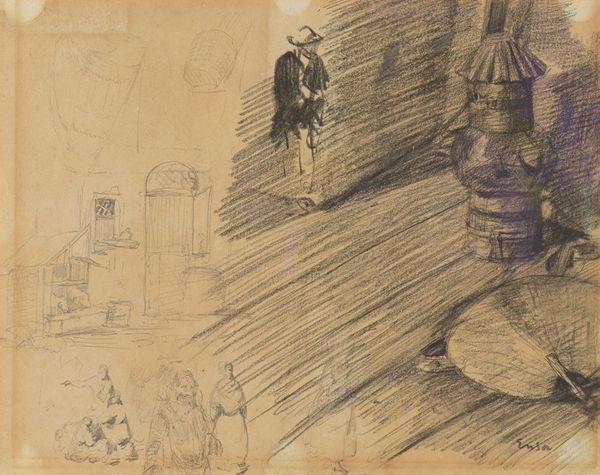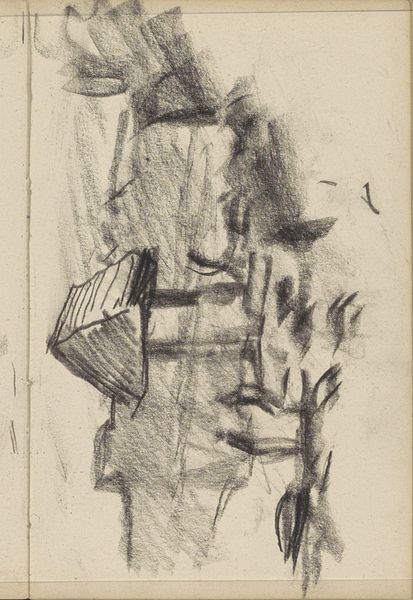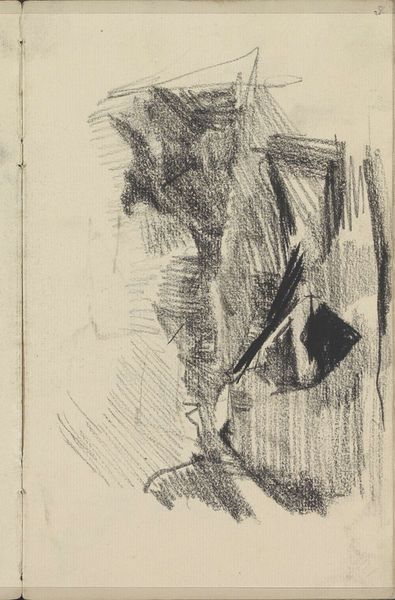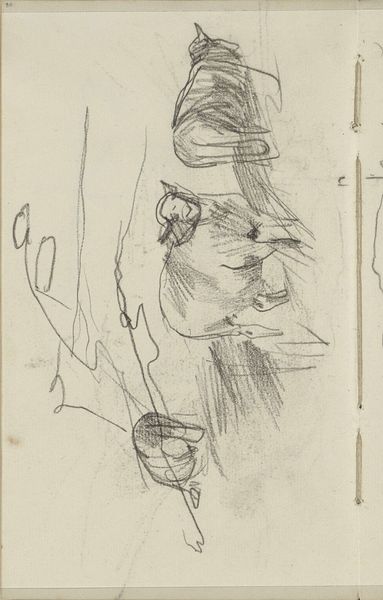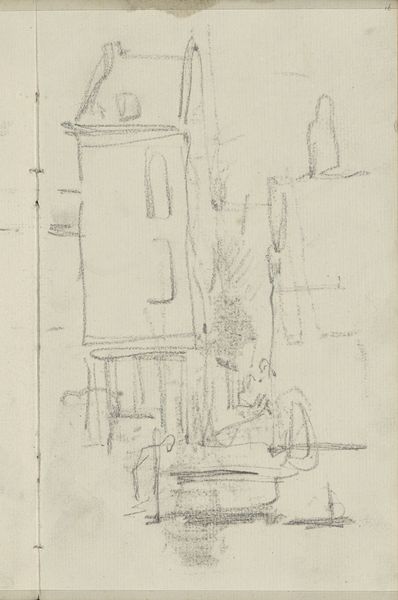
drawing, pencil
#
portrait
#
drawing
#
pencil drawing
#
pencil
#
symbolism
Copyright: Public Domain: Artvee
Curator: Here we have James Ensor's pencil drawing "Kachel en figuren," created between 1880 and 1885. What's your initial response to this piece? Editor: The sketch feels unfinished, like a fleeting thought captured in graphite. There's a sense of mystery; the contrast between the sharply rendered stove and the ghost-like figures invites a certain psychological reading. Curator: Indeed, the tension is palpable. This work comes from a time of significant societal shifts in Belgium. We can examine Ensor's choice of subject and style as part of a larger conversation about class, industrialization, and the shifting roles within bourgeois families during the late 19th century. Editor: Absolutely. The stove itself is such a strong symbol of domesticity and warmth, yet it's depicted here with such stark, almost industrial lines. It's reminiscent of an altar, a place for performing rituals of care and comfort, only here, those rituals seem shadowed by those vague figures in the background. Are they observers, participants, or ghostly memories? Curator: That is a critical observation. The symbolism of the stove connects deeply to concepts of power and control within the household. One could even view it as representing the patriarchal structure, both providing for and potentially stifling the domestic sphere. The ambiguity of the figures complicates this interpretation, prompting questions about the repressed voices or untold stories within that very same domesticity. Editor: I agree. The stove is rendered with solidity while the figures in the background fade into near-transparency. They could signify anxieties or secrets, but their elusiveness grants them power; their meaning is never completely resolved. They haunt the very scene meant to project order and hearth. Curator: Considering Ensor’s later embrace of avant-garde movements, particularly symbolism, this early piece offers crucial insights. He’s already challenging conventional artistic portrayals of domestic life, subverting expected visual language, hinting at tensions and uncertainties. This piece is not a cozy hearthside scene. Editor: Precisely. It serves to remind us how objects, especially those associated with daily life, accumulate layers of cultural meaning and emotional significance. They are far from innocent. Curator: Exactly. Art always echoes the realities and tensions that influence it. Editor: Thank you. The dialogue gives pause, hopefully provoking a deeper examination.
Comments
No comments
Be the first to comment and join the conversation on the ultimate creative platform.

